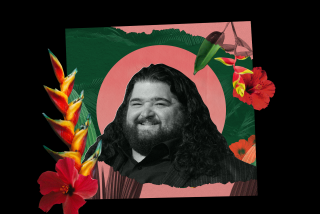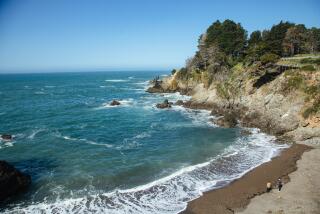‘LOST WOMAN’ (CONT’.)
- Share via
History is weird.
You have to wonder how Robert Radnitz (Letters, Aug. 23) could make a successful movie of “Island of the Blue Dolphins” without completely understanding the story of the “Lost Woman” of San Nicholas Island.
The so-called “Lost Woman” was baptized conditionally, as Juana Maria, on her deathbed by Father Francisco Sanchez. She may not have been Chumash, for local Indians could not understand her lingo. Her language may have been Shoshonean or Kodiak.
In 1811, an American sea captain under contract to the Russian American Co. placed Kodiaks on San Nicholas Island. The Alaskans were very successful in hunting local sea otter in their baidarkas. The Kodiaks may have killed the native males and mated with their women.
It is obvious Juana Maria lived on San Nicholas before 1835--how long is unknown. It has been suggested she was born there after 1811.
The Indians removed in 1835 and taken to San Pedro were not necessarily from the same tribe.
Juana Maria died seven weeks (not some years) after her arrival in Santa Barbara. In 1853, after he found her, Capt. Nidever remained on the island for a month hunting otter before he returned to the mainland. Too much fruit as well as the unaccustomed rich food served at the Nidever table is suspected in contributing to her death.
Juana Maria is buried in the mission cemetery (not on a nearby hill). A DAR plaque commemorates the burial.
Her survival skills were extraordinary (or perhaps ordinary for an Alaskan Indian). Unfortunately, some of the artifacts found with her and supposedly sent to Rome by the mission fathers have not been found.
The American otter hunters (1800-1880) changed the political and economic future of California. I am developing a book chronicling the sea-otter hunters of Southern California and would appreciate hearing from anyone with knowledge or family history of that era.
JIM NORRIS, Olive Press Publications, LOS OLIVOS
More to Read
Sign up for The Wild
We’ll help you find the best places to hike, bike and run, as well as the perfect silent spots for meditation and yoga.
You may occasionally receive promotional content from the Los Angeles Times.






